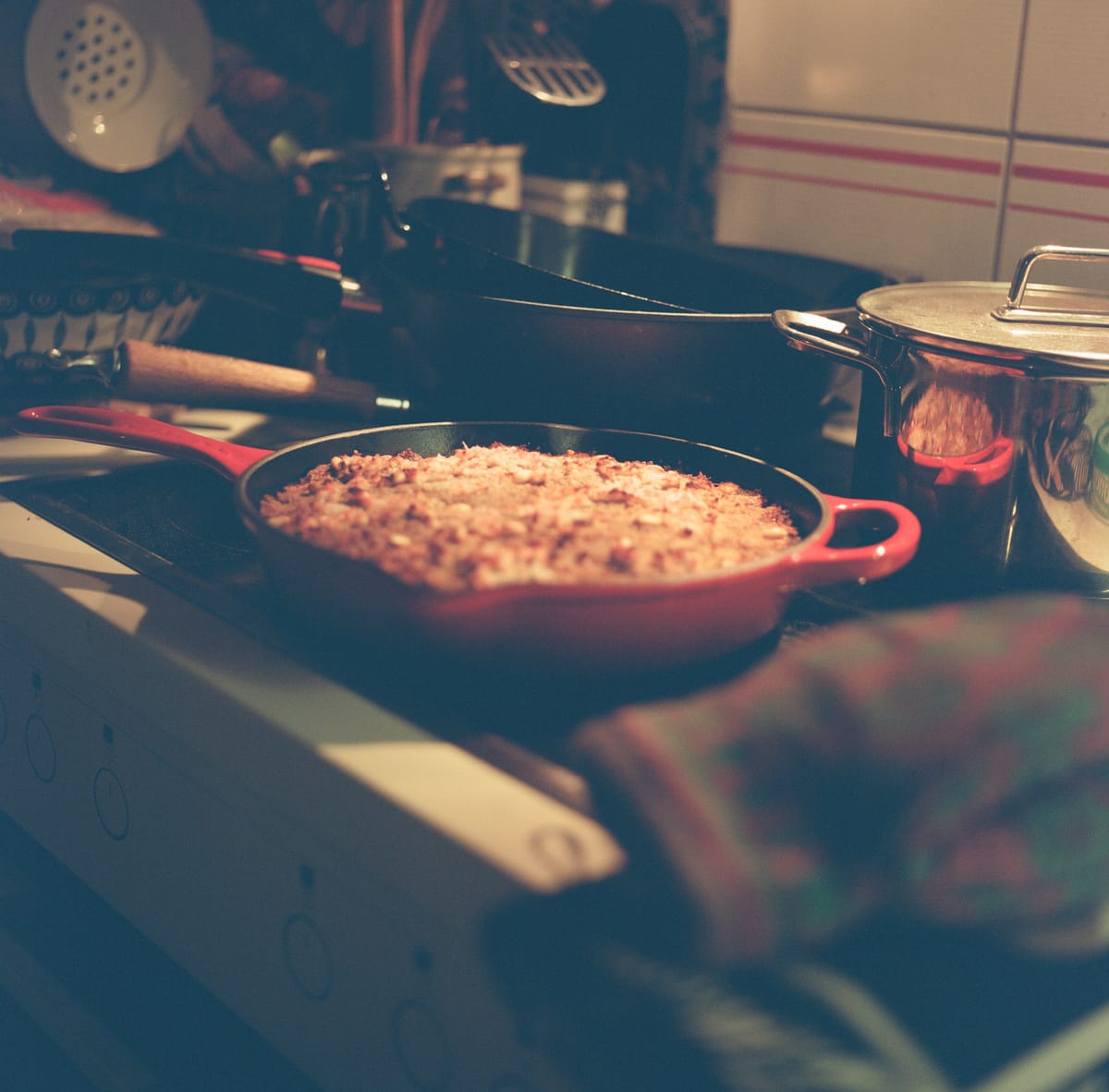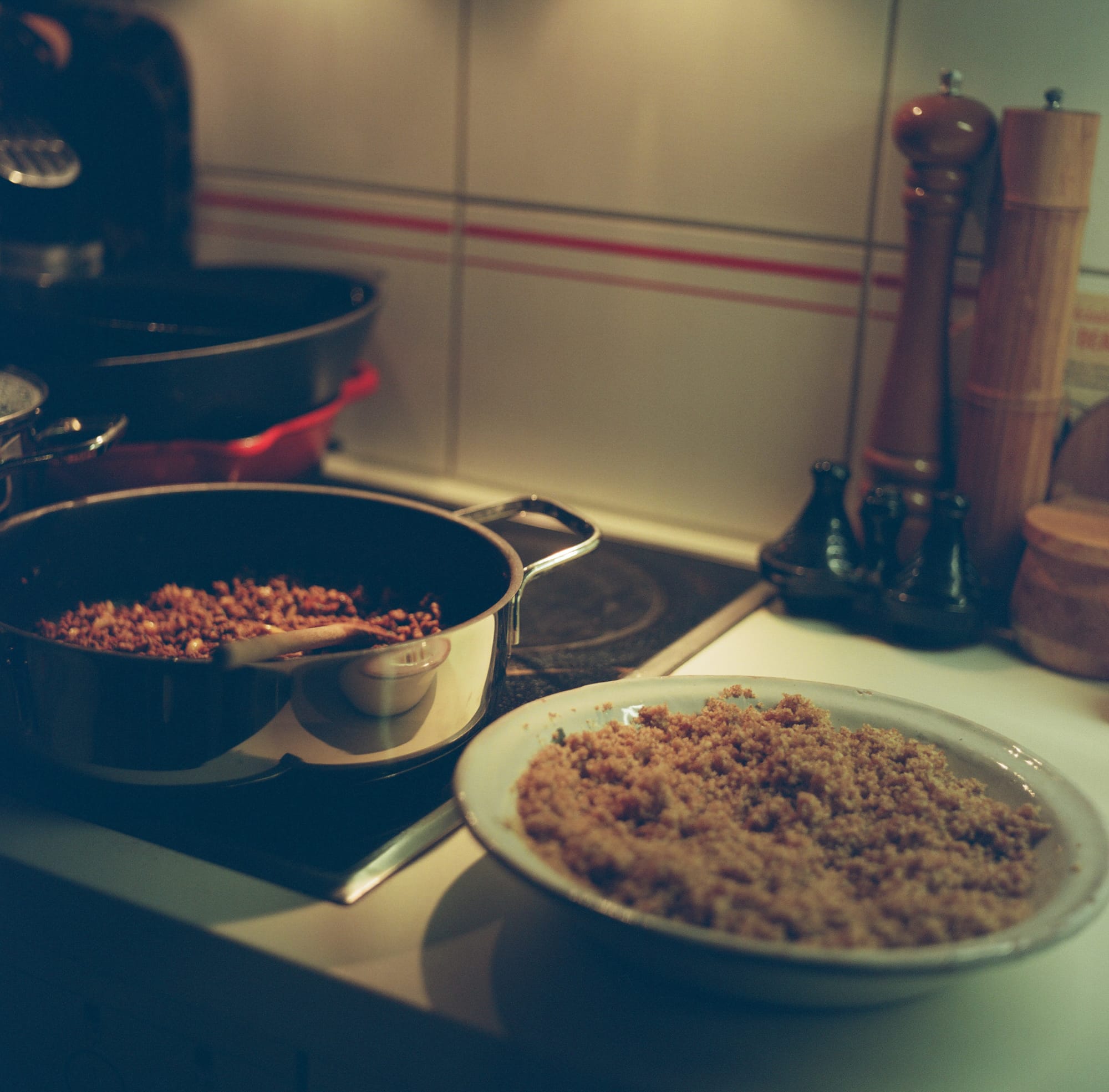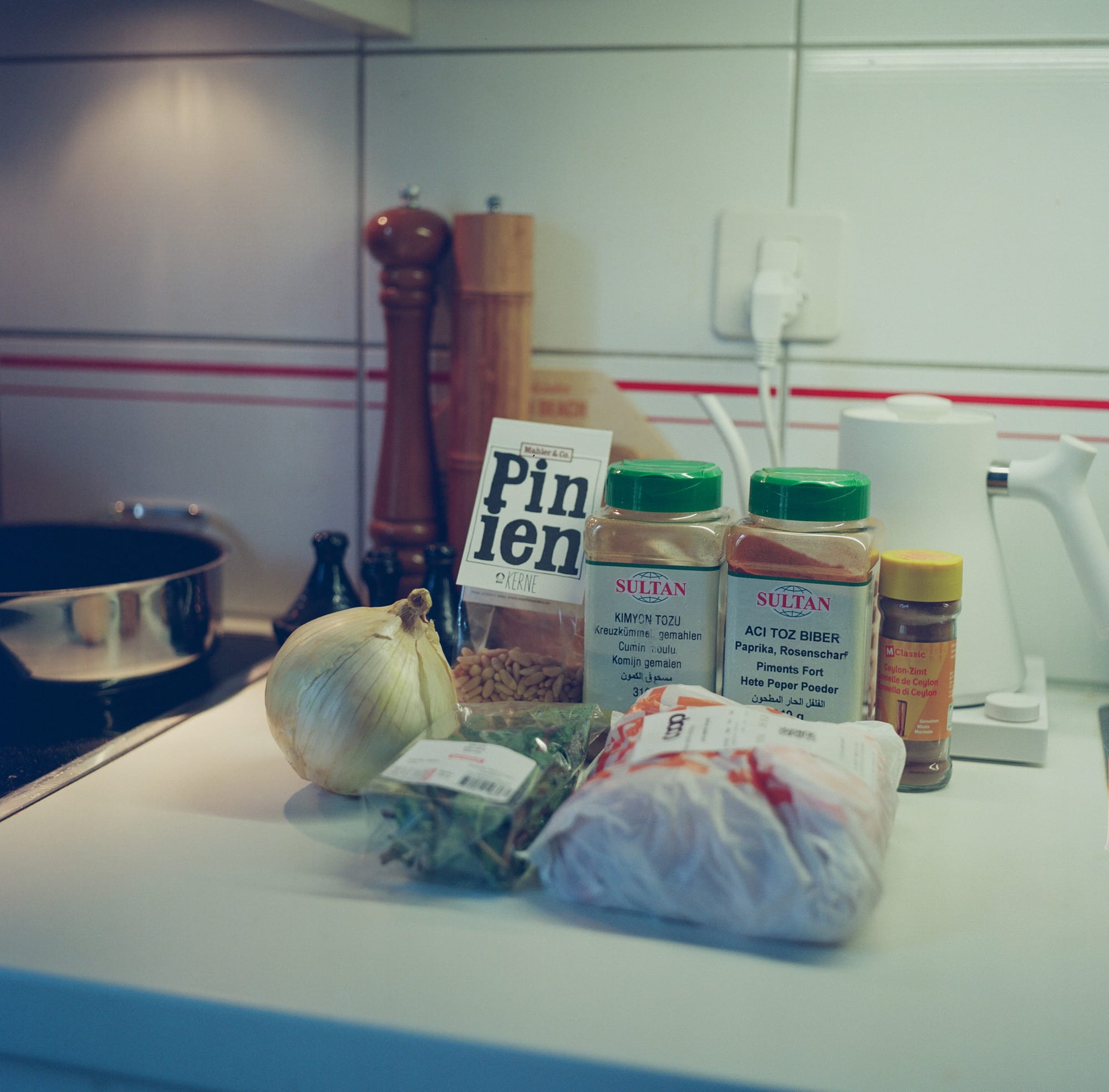What to eat LEBANON 🇱🇧 Baked kibbeh
Like most things Lebanese, our story begins in a most likely spot, Syria... Kibbeh is not so much one dish as an umbrella name for a variety of dishes that can be served raw, baked, or fried.

Baked kibbeh
Published February 21, 2025 · by Amanda Rivkin Häsler
Like most things Lebanese, our story begins in a most likely spot, Syria. That is because from the mid-sixteenth century, Lebanon was not a nation-state as these did not exist as geographical and administrative entities in earnest until the early part of the last century. Before then, Lebanon as we know it today was part of Ottoman Syria and Aleppo was very much the center of the Levantine portion of northern Ottoman Syria.
The Mamluk conquests which began in the second half of the sixteenth century, consolidated Ottoman rule in the area, though Tripoli had its turn at being a proper administrative area carved out of Damascus in the latter half of the same century. Not until 1667 was the Mount Lebanon Emirate given special autonomy within Sidon province, though such autonomy still fell under the purview of the overlords of Ottoman Syria and the Sublime Porte of the Sultan’s rule in Istanbul.
If you ever wondered why Lebanon’s fractious divisions and historic connection to Syria were so strong, you need not look further than the food, in fact. Kibbeh, a Levantine specialty, found across the Middle East for certain, is considered the unofficial dish of Lebanon. Kibbeh is not so much one dish as an umbrella name for a variety of dishes that can be served raw, baked, or fried.

Kibbeh consists of minced raw meat, usually lamb but often enough beef or even goat, which is mixed with bulgur wheat and spices. It is a popular, classic Levantine dish that is made by pounding bulgur wheat and meat into a fine paste which is then accompanied by toasted pine nuts and spices. It may be layered, cooked on a single tray (the home-style version we try here), or formed into a ball surrounded by bulgur wheat that is then deep-fried.
Many point to Aleppo as the likely origin of kibbeh. Over a dozen varieties of kibbeh have been clocked, numbering at least 17. Etymologically, the term first appeared in ancient Biblical texts meaning “tent” or “tarp,” though later Aramaic expanded on the definition of kababa to mean “a covering.”

The dish itself has traveled with the Lebanese and Syrian diasporas to Africa, Latin America, and yes, America, too. In Brazil, where there is a large Lebanese and Arab diaspora, it is known as quibe. On Colombia’s Caribbean coast, it is mostly made with beef and served in many Lebanese and Syrian restaurants though it is also common in both Arab and non-Arab households where it is offered as a starter along with other regional specialties like empanadas.
Even the heart of American blues, the Mississippi Delta, knows kibbeh as waves of Lebanese immigration to the U.S. began in the 1870s and continued for nearly a century. Most early Arab immigrants to the U.S. came from the Mount Lebanon region of Syria before there was a country called Lebanon. They called themselves “Syrian” and began new lives as traders, before moving on to opening groceries and then restaurants. Lebanese like Palestinian meant one was from a specific part of Ottoman Syria which in those days existed as more of a cultural label than a national one.
It was not until the 1950s that “Lebanese cuisine” was spoken about “as distinct from the Levantine region,” notes Professor Graham Pitts, the author of Making Levantine Cuisine: Modern Foodways of the Eastern Mediterranean. The first chapter of his book is on kibbeh, where he notes that while kibbeh was common across the Levantine space, it was not across the entire Ottoman sphere of influence. Indeed, a Lebanese friend in Beirut who I consulted on this dish referred to it as “a common Levantine” one.
In 1951, former tourism minister George al-Rayyis makes his first mention of kibbeh as Lebanese in his cookbook, Kitab Fann al-Tabkh, or The Art of Cooking, in which he clocks 16 kibbeh recipes. After the Lebanese Civil War, which lasted from 1975 until 1990, a new era of cookbooks emerged from the ashes of that conflict as food became a way to remember the past and unite people again. In his book, Min Turath Lubnan, or From Lebanon’s Heritage, the Arab World’s first TV chef, Ramzi Choueiri, catalogued 37 kibbeh recipes, each associated with individual villages across Lebanon.
In modern Beirut, one restaurant, Joulia, in the upscale Achrafieh section of Beirut, specializes in the dish and bills itself on its Instagram page as “the first kebbé (kibbeh) restaurant in Lebanon.” It’s owner, Jad Abdallah, who named the restaurant for his grandmother, told L’Orient Today, “Kibbeh reflects our history. We come from the mountains, there were a lot of peasants and people mostly had burghul (bulgur) and access to goat meat.”

Recipe
Ingredients:
For the kibbeh filling:
Olive oil
Half a large onion or 2-3 small white or yellow onions
50 grams of pine nuts
1 pinch and then 1 teaspoon of Maldon salt
500 grams of ground lamb
1 tablespoon of cumin
1 tablespoon of paprika
1 teaspoon cinnamon
10 grams of fresh mint
For the kibbeh:
1.5 cups fine bulgur
Half cup of water
Half a large onion or 2-3 small white or yellow onions
500 grams of ground lamb
1 tablespoon of cumin
1 tablespoon of paprika
1 teaspoon of cinnamon
1 teaspoon of za’atar
1 teaspoon salt
Cold water
Butter
Step 1: Dice onion and add to olive oil on low heat. Caramelize onions until golden brown.
Step 2: Add 50 grams of pine nuts and a pinch of salt and stir. Allow pine nuts to become slightly golden brown before adding the lamb and spices. Add fresh mint last. Allow to cook on low heat for 30 minutes before pulling from heat to cool.
Step 3: Combine bulgur and water and fluff with a fork. Set aside.
Step 4: Puré the onion in a food processor until liquified. Add half to the kibbeh mixture and fluff with a fork. Set aside the remaining onion juice.
Step 5: Add the ground lamb to a food processor. Add spices and combine.
Step 6: Preheat oven to 200 degrees centigrade.
Step 7: Using cold water as needed to keep meat and bulgur from sticking to the hands, gradually combine the bulgur with the spiced lamb until a dough forms.
Step 8: Grease a round baking tray or cast iron with butter or olive oil. Then spread a thin layer of about half the kibbeh, using cold water as needed. Then add the cooked lamb meat and top with the remaining kibbeh, using cold water to avoid sticking to either hands or the lamb meat stuffing in between. Press down on the top layer.
Step 9: Using a knife, trace a grid-like arrangement with the squares as trapezoids in the shape of diamonds. Place little thin slices of butter every inch or so apart and place a pine nut in the middle of eat diamond. Drizzle the remaining pureéd onion over the kibbeh before placing in a middle rack in the oven for 45 minutes until top is golden brown and cooked. Cool for about ten minutes before cutting and serving.
Tips, tricks and notes:
For full Lebanese flair, serve with a spread of olives, labneh, hummus, muhamarra, falafel (see our recipe from arch-rival Israel but shhhh, it’s a Levantine recipe shared by all with variations, don’t tell) if you are particularly motivated, pickled turnips or beats, and pita bread.
For bulgur, labneh and pita, we went to Levant Supermarkt at Genfergasse 8 near the Bern rail station, where we also procured pickled turnips for previous meals and a world of wonderful spices in the basement.
For pine nuts, Loeb Lebensmittel and their Italian olive bar is swell for the meze spread too.
Learn where to eat Lebanese food in Switzerland.
Follow our social media pages @swissglobaldining on Instagram, TikTok and YouTube